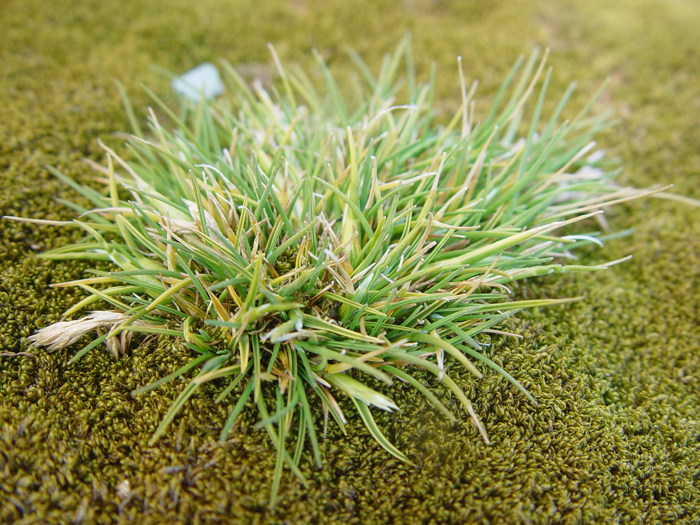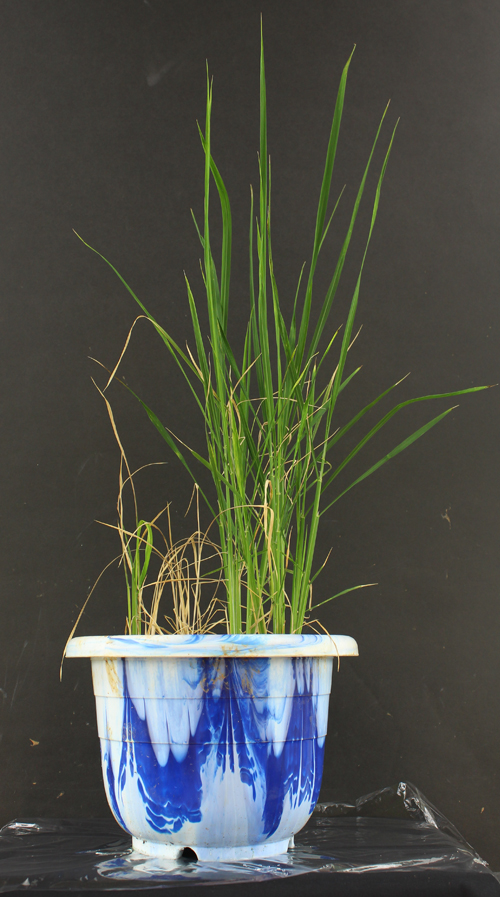Researchers have developed the technology to produce rice plants that are more tolerant to cold weather.
A team of researchers from the Korea Polar Research Institute (KOPRI) and Yonsei University succeeded in identifying and separating the genes from an Antarctic plant that allow the plant to better adapt to cold weather. This is a first of its kind, worldwide. The researchers transplanted the genes into rice plants and their tolerance of the cold improved five times, the Ministry of Oceans and Fisheries said on June 1.
Since 2011, the researchers have studied indigenous Antarctic plants living in the extreme weather conditions found on the continent. They separated the genes "D. antarctica C-repeat binding factor 7" (DaCBF7) from a Deschampsia antarctica, a type of Antarctic gramineae grass.
Antarctica is not suitable for plant life due to the polar nights without any sun, the white nights, strong ultraviolet rays and extremely cold weather. Ice does not melt, even in the summer. Deschampsia antarctica, or Antarctic hairgrass, is one of only two flowering plants native to the continent, the other being Colobanthus quitensis or Antarctic pearlwort. Both plant species' populations are on the rise due to global warming.


The Barton Peninsula, one of the major habitats for Deschampsia antarctica, has an average temperature between 0 and 4 degrees Celsius in the summer. Due to wind blowing at 36 kilometers per hour, the wind chill temperature is much lower than that. An optimal temperature for the plant's growth would be about 13 degrees Celsius, but the plant is highly tolerant to cold weather and can even conduct 30 percent of its photosynthetic activities at 0 degree Celsius. The plant has protein-based genes that can prevent potential cell damage caused by freezing temperatures.
The researchers transplanted the DaCBF7 onto rice seeds. They learned that transgenic rice plants are similar to ordinary rice plants in their shape and growth speed in normal temperatures. However, transgenic rice plants proved that they are much more likely to survive in cold weather.
Ordinary rice plants and transgenic ones were exposed to cold temperatures of 4 degrees Celsius for eight days, a level that could cause serious cold weather damage. Only 11 percent of ordinary plants survived, while a maximum of 79 percent of transgenic plants survived and an average of 54 percent lived. The DaCBF7 genes proved that it could significantly improve rice plants' tolerance to the cold.

"We discovered that DaCBF7 can prevent cold weather stress in plants," said Lee Hyoung-seok, a researcher at the KOPRI. "When the genes were applied, the level of cold weather tolerance of transgenic plants was five times higher than that of ordinary rice plants."
Research results were published on the Plant Science homepage, an international journal. (http://www.sciencedirect.com/science/journal/01689452)
By Limb Jae-un
Korea.net Staff Writer
Photos courtesy of the KOPRI
jun2@korea.kr
A team of researchers from the Korea Polar Research Institute (KOPRI) and Yonsei University succeeded in identifying and separating the genes from an Antarctic plant that allow the plant to better adapt to cold weather. This is a first of its kind, worldwide. The researchers transplanted the genes into rice plants and their tolerance of the cold improved five times, the Ministry of Oceans and Fisheries said on June 1.
Since 2011, the researchers have studied indigenous Antarctic plants living in the extreme weather conditions found on the continent. They separated the genes "D. antarctica C-repeat binding factor 7" (DaCBF7) from a Deschampsia antarctica, a type of Antarctic gramineae grass.
Antarctica is not suitable for plant life due to the polar nights without any sun, the white nights, strong ultraviolet rays and extremely cold weather. Ice does not melt, even in the summer. Deschampsia antarctica, or Antarctic hairgrass, is one of only two flowering plants native to the continent, the other being Colobanthus quitensis or Antarctic pearlwort. Both plant species' populations are on the rise due to global warming.


Deschampsia antarctica inhabits the land surrounding the King Sejong Station in Antarctica.
The Barton Peninsula, one of the major habitats for Deschampsia antarctica, has an average temperature between 0 and 4 degrees Celsius in the summer. Due to wind blowing at 36 kilometers per hour, the wind chill temperature is much lower than that. An optimal temperature for the plant's growth would be about 13 degrees Celsius, but the plant is highly tolerant to cold weather and can even conduct 30 percent of its photosynthetic activities at 0 degree Celsius. The plant has protein-based genes that can prevent potential cell damage caused by freezing temperatures.
The researchers transplanted the DaCBF7 onto rice seeds. They learned that transgenic rice plants are similar to ordinary rice plants in their shape and growth speed in normal temperatures. However, transgenic rice plants proved that they are much more likely to survive in cold weather.
Ordinary rice plants and transgenic ones were exposed to cold temperatures of 4 degrees Celsius for eight days, a level that could cause serious cold weather damage. Only 11 percent of ordinary plants survived, while a maximum of 79 percent of transgenic plants survived and an average of 54 percent lived. The DaCBF7 genes proved that it could significantly improve rice plants' tolerance to the cold.

Transgenic rice plants (right) have a level of cold tolerance five times higher than that of ordinary rice plants.
"We discovered that DaCBF7 can prevent cold weather stress in plants," said Lee Hyoung-seok, a researcher at the KOPRI. "When the genes were applied, the level of cold weather tolerance of transgenic plants was five times higher than that of ordinary rice plants."
Research results were published on the Plant Science homepage, an international journal. (http://www.sciencedirect.com/science/journal/01689452)
By Limb Jae-un
Korea.net Staff Writer
Photos courtesy of the KOPRI
jun2@korea.kr
Related Contents
Most popular
- Military discharge sets stage for reunion of all 7 BTS members
- 'We are back!' BTS Festa heralds hyped return of K-pop phenom
- K-pop streaming on Spotify skyrockets 470-fold in 10 years
- Presidents Lee, Trump discuss tariff deal in first phone talks
- President Lee leaves for G7 Summit in Canada on first int'l trip






